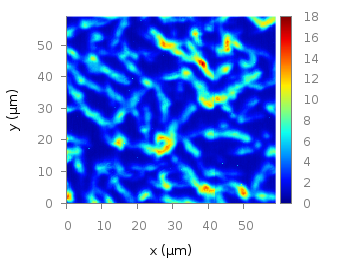rossh, isn't the cause of all of these endless threads here and elsewhere that you sell a product V-Planner that relies on VPM? Now it turned out that much of the underlying technology that you founded your business on is poor. Well, that's really inconvenient, but **** happens; get over it. Of course you can continue selling VPM planning software. I don't expect vendors to stop selling RGBM or VPM dive computers either, they'll sell it as long as there's a market for it.
In the future however you have to expect a decreasing number of users of VPM planning software. Maybe we'll see also a broader choice of methods in planning software, such as linear-exponential VVAL18, or better ideas than GF for tweaking Buhlmann.
We sell more than VPM. MultiDeco is our main product - with two models and room for more. Happy to add any new and validated info.
(added..) I have actually built a better ZHL model, just to see what it does. It has integral and properly handled gradient changes, and separates N2 and He adjustments. Its scales properly without the exponential error of the existing GF. But why bother?
VPM-B is still popular and works perfectly well. No faults at all with it. In fact the latest "new" gas kenetics, have almost now difference to it.
I'm going to toot my horn here - in recent years, the conversation has been about this supersaturation processes - our program is the only one to give divers the tools to do this, as shown above. Then the conversation was about "new" kinetic" helium rates. Our V-Planner has that adjustment in built - make you own settings and experiment all you want.
Then just this year, the thoughts have shifted again towards Inner ear DCS and the possible related excess accelerated decompression issues. Again our programs have had this regulating ability for 12 years now. So we make the tools that let divers explore all this new and old theory, as best we can.
I attend the important meetings and gather info, I'm a member of various societies, and keep an eye out for new and interesting stuff to be added.
VPM might not be your favorite model, but its still the most current and correct model we have in use today. No added fudges, makes perfectly good deco plans straight out of the box, that anyone can use. In contrast, real ZHL was dropped a long time ago, and most plan types today, have adopted the bubble model attributes - in larger or smaller amounts. There is the military plans, but they tend to be very shallow, and not something that tech divers want to do. We are also limited by the need for trimix planning, which most military do not have. So whats next? The hybrid model that seems to be in favor, cannot be duplicated in pure dissolved gas theory form. So it needs a physical component. Fiddling the half time is not going to get there either.
You ask why does this argument keep going? See the two long contrasting posts above. I'm defending the VPM model from being miss - characterized, or described in unfair ways. Some others want to shift deco towards a different place. Some want to unfairly criticize VPM for things it has not done, and some will apply as much voodoo scare tactics as possible to frighten people into moving.
But consider this - the dive spectrum has almost been fully explored already. The early models were short and shallow, then shallow and longer. Many dissolved (theoretical) models occupy the middle ground. Then Pyle stops, bubble models went to a middle to deeper area based on microbubble physics. Then some ad-hoc methods went even deeper, almost to the bottom So what's left to explore in terms of pure decompression design? Not much left. Today's new direction - ever longer in the shallow sections, is not exploring - it's just padding.
Just about any plan we use today is fine, because they all have more than enough deco for the conditions. Looking at DCS numbers, they have been steady / low for 15 years now. And that corresponds to three things - much greater discipline in procedures, thanks to the DIR movement, and 2/ the deep/er stop profiles, with modest to slow shallow sections (typical of all models / plans today), and 3/ much better avoidance of known bad deco practices.
And were are we heading? Away from pure decompression models, and towards extra safe added on padded margins and more (unnecessary) deco time, for just in case purposes. Are they any safer? The numbers do not bear out any real changes. Are they actually needed? I don't think so, but anyone is welcome to pad up the deco all they want or need or desire.
.




 . They just have very limited use for a dive decompression, and they show no valuable or controlling limiting data.
. They just have very limited use for a dive decompression, and they show no valuable or controlling limiting data.
